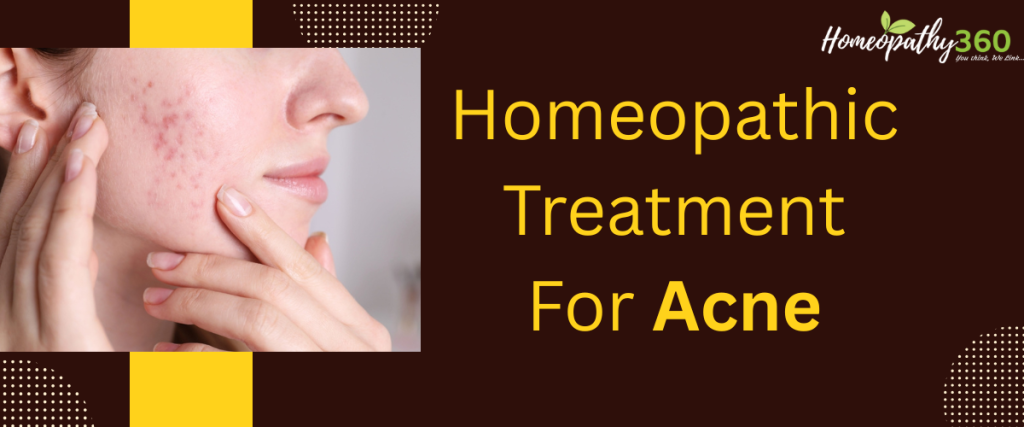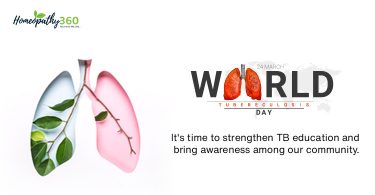
ACNE
Areas of seborrhoea (scaly red skin), comedones (blackheads and whiteheads), papule (pinheads), nodules (big papule), pimples, and potentially scarring are the hallmarks of acne vulgaris, also known as just acne. In addition to scarring, its primary psychological impacts include low self-esteem, shame, and embarrassment. Patients who have untreated acne may occasionally have to deal with social stigma, which is a mark of shame or infamy, which can lead to despair and suicidal thoughts. Regardless of sex, an increase in androgens like testosterone throughout puberty is typically the cause of acne in adolescents. Skin with a higher concentration of oil glands, such as the face, upper chest, and back, is more likely to have acne. Acne that is severe causes inflammation. alterations in the pilosebaceous unit are the cause of the skin alterations.
The hair shaft, hair follicle, and sebaceous gland—which produces sebum—make up the pilosebaceous unit. Hundreds of thousands of microscopic hair follicles, commonly referred to as pores, cover human skin, particularly on the face, neck, back, and chest.
These follicles can occasionally overproduce cells and get blocked for reasons that no one fully understands. Bacteria start to develop when sebum, or oil, that normally drains to the surface becomes stuck. Every acne lesion begins as a microcomedone.
Normal Follicle
Papules and pustules with erythema (redness) and edema (swelling with suppuration-pus production) are the result of germs and debris building up in these closed pores.
Reasons for acne
Hormone (androgen) presence is linked to acne vulgaris.
Sebaceous gland activity, which is elevated when androgens are present
Unusual keratinization of the upper part of the hair follicle causes plugging of the follicle, which results in comedones.
The hair follicle contains the bacteria P. acnes, which feeds on oil and converts it into free fatty acids that lead to inflammation. Comedones that are open or closed, pustules or inflammatory pustules, scarring.
Around 80–90% of teens in the Western world are thought to suffer from acne, which is most common throughout adolescence. However, it is impossible to anticipate when it will completely go away, and some people will continue to have this illness far into their thirties, forties, and beyond.
The condition known as acne vulgaris, or simply “acne,” affects the pilosebaceous follicles. usually appears between the ages of 8 and 12 (typically the earliest indication of puberty), peaks between the ages of 15 and 18, and goes away by the age of 25. 90% of teenagers are impacted, and all races are equally affected.
Positive family histories are common.Up to their 40s, 4% of men and 14% of women will experience acne.It is not unusual for women to experience their first outbreak between the ages of 25 and 35.
Acne can be upsetting and incredibly bothersome. Lesions from acne heal slowly, and as one starts to go away, more seem to appear.
Symptoms and indicators
Acne is commonly characterized by comedones, papules, pustules, nodules (big papules), seborrhea (increased oil-sebum discharge), and perhaps scarring. Acne looks different on different skin tones. It could lead to social and psychological issues.
Previously, some of the large nodules were referred to as “cysts,” and severe cases of inflammatory acne were referred to as nodulocystic. Anywhere sweat gathers in hair follicles and perspiration ducts, such as the buttocks, groin, and armpit area, the “cysts,” or boils, that accompany cystic acne might show up. Compared to normal acne, cystic acne damages deeper skin tissue.
Non-inflammatory acne
Microcomedones may spontaneously unplug and heal, or they may develop into comedones, which are non-inflammatory skin blemishes that can be either blackheads or whiteheads: 12–13
Whitehead
A whitehead develops when the germs and trapped sebum remain beneath the skin’s surface. Whiteheads can be so minuscule that they are not visible to the human eye, or they might appear as little white dots.
Blackhead
When the pore opens to the surface, the sebum—which contains the skin pigment melanin—oxidizes and turns brown or black, resulting in a blackhead. It cannot be removed by washing and is not dirt. Because
the contents of blackheads drain to the surface relatively slowly, they can persist for a long time.
Inflammatory acne
Inflammatory acne may result from a ruptured follicular wall or from a blackhead or whitehead releasing its contents to the surface and healing. Either picking or touching the skin, or a chance event, might trigger this rupture. For this reason, it’s crucial to avoid doing too much to skin that is prone to acne.
PAPULE
A rupture in the follicular wall results in a papule. The hole gets inflamed as white blood cells flood in13.
PUSTULE
When white blood cells reach the skin’s surface, a pustule develops a few days later. This is what most people call a “pimple” or “zit.”
A papule or pustule may envelop nearby follicles and cause significant inflammation in the surrounding skin if it explodes or entirely collapses. We refer to these lesions as nodules or cysts.
NODULE
A big, swollen hump that may hurt to the touch can result from complete collapse caused by a follicle breaking along the bottom.
CYST
Large lesions packed with pus can occasionally be the result of a significant inflammatory response.
PIGMENTATION
The phrase “pigmented scars” is a little deceptive because it implies that the scars are real and that the skin’s pigmentation has changed, yet neither is accurate. Usually, nodular or cystic acne—the uncomfortable “bumps” beneath the skin—causes pigmented scars. They frequently leave a red, irritated mark behind. Avoiding the nodule or cyst from getting worse is often enough to prevent pigmentation scarring. Although they can stay forever if left untreated, pigmentation scars almost often go away with time, usually within three months to two years.
While the frequency of rosacea, which might present similarly, is higher in older age groups, acne vulgaris is rare to develop in later life. In adult women, true acne vulgaris may be a symptom of a condition like pregnancy or other conditions including hirsutism, polycystic ovary syndrome, Acne flare ups can be caused by genetics, infections, and psychological stress.
Pathophysiology
Blockages in the follicles cause acne to form. The first alteration is hyperkeratinization and the development of a microcomedo, a clog of keratin and sebum. As androgen (DHEA-S) production rises, sebaceous glands enlarge and sebum production rises as well. The microcomedo can grow into a closed comedo or an open comedo (blackhead). The direct cause of comedones is the accumulation of dead skin cells and sebum, a naturally occurring oil, in the sebaceous glands. Under these circumstances, the naturally occurring bacterium that is mostly commensal Inflammatory lesions (papules, infected pustules, or nodules) in the dermis around the microcomedo or comedones can be caused by Propionibacterium acnes, resulting in redness and possibly scarring or hyperpigmentation.
Management
Allopathy treats acne by applying an exterior ointment, which suppresses the problem and causes severe, severe symptoms. In contrast, homeopathy treats the patient’s entire health and treats the underlying cause, which prevents suppression.
Antibiotics
Because of their antimicrobial activity against P. acnes and anti-inflammatory qualities, antibiotics reduce acne and are only used in more severe cases. They are losing their effectiveness as P. acnes becomes more resistant globally. Topical antibiotics have not been thoroughly studied, however they may be useful to treat acne in expectant mothers.
The primary therapeutic modalities include systemic and topical retinoids, systemic and topical antibiotics, and systemic hormonal treatments.
In order to combat various pathogenic reasons, multiple medicines are frequently employed (e.g. topical
antibiotic plus retinoid). To stop antibiotic resistance from developing, apply topical antibiotics along with benzoyl peroxide.
Salicylic acid
Because of its bacteriostatic and keratolytic qualities, it helps to reduce acne. Salicylic acid also encourages the shedding of epithelial skin cells and opens blocked skin pores. People with darker skin types who take salicylic acid have been shown to exhibit hyperpigmentation of the skin.
Homoeopathy for Acne
Any internal disorder manifests itself externally on the skin. In order to restore the skin to normal, an effective homeopath would undoubtedly concentrate on the inside reason. Therefore, the patient’s immunity, the length of time needed, and the reason this condition developed will all determine how long it will take to heal.
A person is treated holistically with homeopathy. It indicates that both the patient and his pathological condition are the main focus of homoeopathic treatment. Following a thorough individualizing examination and case analysis that takes into account the patient’s medical history, physical and mental constitution, etc., the homoeopathic medications are chosen. Additionally, a miasmatic propensity (predisposition/susceptibility) is considered.
The totality of symptoms
In homeopathic prescribing, the essence, the postures, gestures, behaviour, and the PQRS (pique, queer, rare, odd) symptoms should be taken into account.
The diagnosis helps in surface Miasms
The miasm, the facial expressions, the odd, quirky, and uncommon symptoms, and the entirety of the symptoms all go hand in hand.
The homeopathic doctor has to make sure the treatment addresses the miasm.
The remedy that addresses the miasm and the entirety of symptoms is then administered by the homeopathic doctor.
Homoeopathic Remedies for Acne
Sulphur
It’s arguably the treatment that is most frequently recommended for this affection, particularly if it is chronic. The skin is hard and rough, and acne is linked to comedones and constipation. The trait that causes sulfur in skin affections is the extreme irritability of water. The face is dreadfully pale. The face is hot and speckled crimson. pores that are black. The type that most closely resembles sulfur itches a lot in the evening and when it’s warm.
Kali bromatum
Acne on the shoulders, neck, and face. This cure is particularly well-suited for ladies, particularly those who are anxious and hypersensitive. Face reddened. facial acne with pustules. depressing, melancholy. Tremulousness Skin itching is more severe on the face, shoulders, and chest.
Berberis aquifolium
When acne is severe and the skin is tough, it helps.
Belladonna
Rosacea. skin that alternates between being red and being pale. Face pustules, dry, heated, and swollen skin. The face is heated, swollen, bluish-red, crimson, and shiny. The patient speaks quickly and is agitated. All senses are acute.
Hepar Sulphur
Papules are prone to extending and suppurating. young acne. Suppurate in excruciating pain. Bleed easily. Every minor wound on unhealthy skin suppurates. wants to be wrapped in warmth; cannot stand to be exposed. irritating or sticking in the affected areas. extremely sensitive to even the smallest touch. The face has a yellowish color and a persistent unpleasant discharge. It is particularly appropriate for scrofulous and lymphatic constitutions that are prone to glandular swellings and eruptions. unhealthy skin. heightened awareness of all impressions. The development of tiny papules around the edge of the initial lesion is how the lesions spread. Characteristics include a strong desire for sour and strong foods, splinter-like aches, hypersensitivity, and chilliness.
Nux vomica
Acne causes blotchy, red skin. The body is burning hot, especially the face, but it is too cold to move or uncover. The average Nux patient is slender, frugal, impulsive, energetic, anxious, and easily agitated. Avoid the open air as Nux patients are easily chilled. Extremely angry and impression-sensitive. Malicious and ugly. dislikes being touched. Face yellowish and pale. yellow around the eyes, mouth, or nose. Swollen and red.
Author
Dr. Prasoon Choudhary1, Dr. Kamal Nainawat2, Dr. Tushar Agarwal3, Dr. Vanshika4, Dr. Nikita Singh5, Pratishtha Patel6
1 HOD, Dept Of Paediatrics, Dr. M.P.K. Homeopathic Medical College, Hospital and Research Center( Cons>tuent College of Homoeopathy University), Sanganer, Jaipur, Rajasthan
2,3,4,5,6 PG Scholar Dept Of Paediatrics, Dr. M.P.K. Homeopathic Medical College, Hospital and Research Center( Constituent College of Homoeopathy University), Sanganer, Jaipur, Rajasthan





